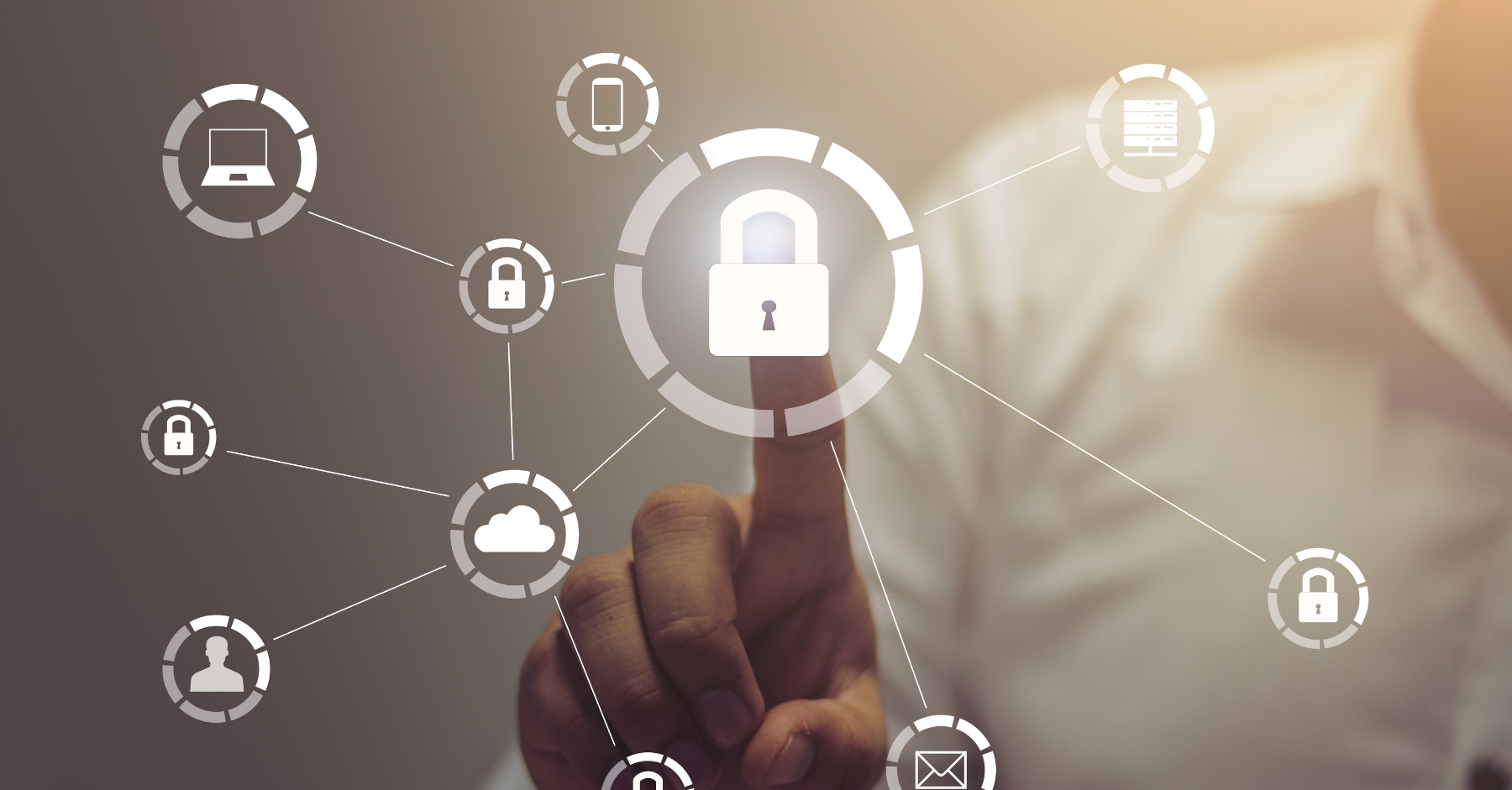2 min read
Securing Your Future: Proactive Cybersecurity with Fluid IT
Cybersecurity is now the primary concern for businesses of all sizes. At Fluid IT, ensuring security is paramount for us and our clients. What many...

You would have to live in a cave to not be aware of how cybersecurity business risk and importance have exponentially increased over the past years. Recently, the entire City of Dallas was hit with ransomware, taking down many critical systems. City staff and vendors were still working around the clock several days later trying to restore city services.
If this can happen to one of the largest cities in the country, with hundreds of dedicated employees in their IT department, including a formal Security Operations Center (SOC), what does it mean for small businesses that are equally a target with no IT staff or cybersecurity expertise?
Small business data cybersecurity threats and events are increasing along with the cost related to responding to any breach or hack, creating a perpetual race to stay ahead and sadly in most cases, just try to keep up. Implementing good cybersecurity best practices is essential for small businesses to protect themselves from potential cyber threats.
Here are some best practices to follow for small business cybersecurity:
Small businesses should educate their employees on cybersecurity awareness and train them on how to identify and respond to potential attacks. This training should cover not only the technical aspects of cybersecurity but also the importance of protecting sensitive information and the consequences of a data breach.
Training should be done annually and be a part of any new employees’ onboarding, as well as scheduled events throughout the year to update all employees on the latest cybersecurity threats. It's important to have all employees sign off on the cybersecurity training to ensure they understand and comply with the best practices.
This is the number one deterrent, one of the easiest to deploy, yet rarely done. Whether you have in-house IT or have outsourced it to a vendor, you should ask them to provide training annually to all employees to ensure that they are up to date with the latest threats and information.
One of the best cybersecurity practices for small businesses is to implement strong and unique passwords for all accounts and devices, and to require multi-factor authentication whenever possible. By doing so, businesses can greatly reduce the risk of unauthorized access to their sensitive information.
Multi-factor authentication, referred to as MFA, is one of the number one deterrents in protecting the various company systems from a breach. It should be a mandatory requirement for all employees. Too many times, we see it ‘optional’ for some staff or departments, only to see that every group gets breached.
Although easy to enable technically, there is often pushback from management and employees because of the extra burden and steps it creates, impeding productivity. However, it only takes one breach to make this an acceptable trade-off in protecting sensitive data.
There are also password management tools not only to help manage the volume of passwords a person has (at last count, I have over 250 and growing), but the tools can also ensure passwords are unique and complex and can help manage multi-factor authentication codes, which are important measures to safeguard data.
While it may seem like a logical step, software management within a business can fall off the radar if no one is assigned to manage the process proactively. This is where your IT provider can really add value and eliminate the headache and risk associated with trying to manage software yourself.
Make sure all small business employees follow this mandatory process, just like the other tips. Unfortunately, some employee groups, especially management, may want to skip the patch/update process because it may inconvenience them in the short term. However, this decision can jeopardize the entire business’s information. If a breach happens, the first person who is breached is usually the one who opted out.
Don't forget that patches and updates apply to all technology equipment, not just computers. Therefore, the patch and update process should include network devices, firewalls, servers, storage, and other equipment.
Having backups are typically front of mind for all companies and small business employees because they instinctively know their data is their business, and losing it is not only disruptive, it can take a business down.
Companies often need to learn how many data sources are critical to their business and if those sources are being backed up. With the tremendous increase and sprawl of cloud-based software-as-a-service offerings, it becomes more laborious to ensure you understand the backup policies of each one.
For example, if your small business uses Quickbooks Online for accounting, Microsoft 365 for email and files (SharePoint, OneDrive), Dropbox for other file sharing, and another piece of software core to your business (for example Clio or Needles for attorneys), it is important to have a data backup plan for each software solution. This involves understanding how to restore files in case of any data loss or corruption.
Many companies assume that software platforms, such as Microsoft 365 email, are backed up as part of the service when in fact, it is not always the case.
It's recommended to use firewalls, anti-virus software, and other security tools that meet industry standards to protect your company’s network and devices from malware and other malicious attacks.
We could write an entire blog on this topic, and probably will, but this focuses on the higher-level factors. As cyber threats have increased, so have the tools to address them. In fact, one of the biggest challenges is finding and knowing which tools to use that best align to your business needs.
My general philosophy for technology is to keep things simple, standardize and centralize. Doing so eases the required ongoing management and monitoring. If you have ten different tools all sending alerts and notifications, it’s almost impossible to keep up with all the ‘chatter’ to find the important ones that require remediation versus simple informative notifications.
Over time, as more cyber security tools have been developed, they have also become increasingly complex (another reason for simplicity). This requires skilled technicians and engineers to ensure they are installed, configured, and managed properly initially and over time. Many times I’ve seen cybersecurity measures put in place with the promise of ongoing monitoring and issue remediation, only to find that no one is actually looking and monitoring.
Limit access to sensitive data and systems to only those who need it, and regularly review and update permissions.
This seems logical and simple, but it is rarely done in practice. Oftentimes, companies start with a simple file share that all employees can access, and over time they add and create sensitive information and documents that only select individuals should have access to. Because files are stored in the ‘central file share’ the original rules that everyone has access still apply. This is where “least access privileges” should be deployed.
Least access privilege is a general rule that says employees, contractors, etc. will only have access to the information they need to do their job. Any other information will be restricted and inaccessible. Rules and policies can easily be implemented to segment and protect sensitive information, the difficult part is identifying what information is sensitive and which individuals should be authorized to handle it.
This is often the point where projects to secure data and information stall. The business instructs IT to restrict data access, to which IT responds by seeking clarification on exactly who should have access to which data. IT can’t and should not be the one to randomly decide how data and information should be segmented and which employees should have which access permissions. It requires focus and tedious work from the business to first define the requirements so IT can then deploy the necessary rules and restrictions.
In today’s world, cybersecurity threats continue to increase, and small businesses are equally vulnerable. Cyber attacks can lead to significant financial loss, lost productivity, and damage to reputation. However, there are ways to protect your business from potential threats.
One of the most effective ways to reduce cybersecurity risk is through employee training and awareness. Encouraging strong and unique passwords, implementing multi-factor authentication, keeping software up to date, regularly backing up data, and using firewalls and anti-virus software are all effective methods.
By implementing these cyber security best practices for your business, you can help ensure the safety and security of your business and its data. Don't wait until it's too late - take proactive steps to safeguard your company's cyber security today.
At Fluid IT, we understand the importance of cybersecurity and have the expertise to help your business stay protected. Our team of experienced professionals can provide customized solutions to keep your business secure, allowing you to focus on running your business.
Contact Fluid IT today to learn more about how we can help protect your business from cybersecurity threats.

2 min read
Cybersecurity is now the primary concern for businesses of all sizes. At Fluid IT, ensuring security is paramount for us and our clients. What many...
-1.png)
The Practical Guide to IT Support Wade Yeaman, CEO of FluidIT, will be your guide in exploring the evolution of IT support and cybersecurity...

Welcome back to the second part of our 5-part series, "Digital Evolution: 5 Key Tech Trends for Your Business." In this installment, we delve into...